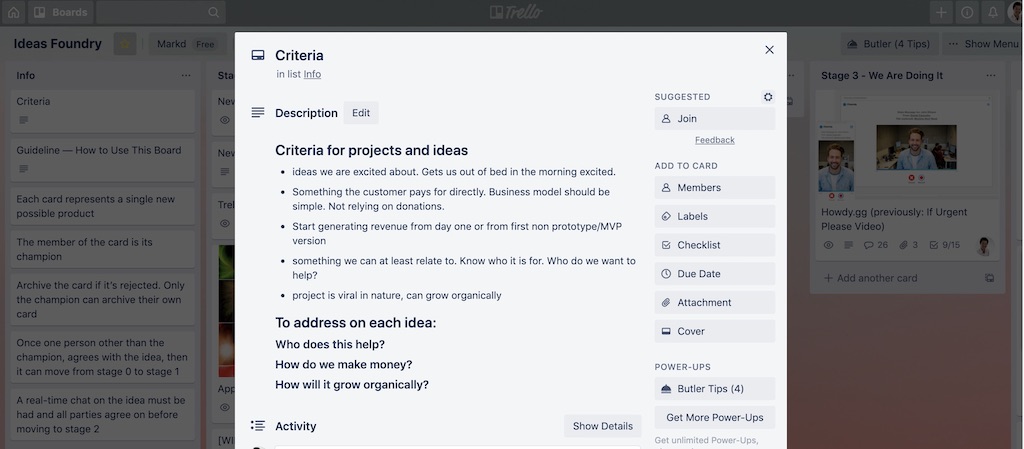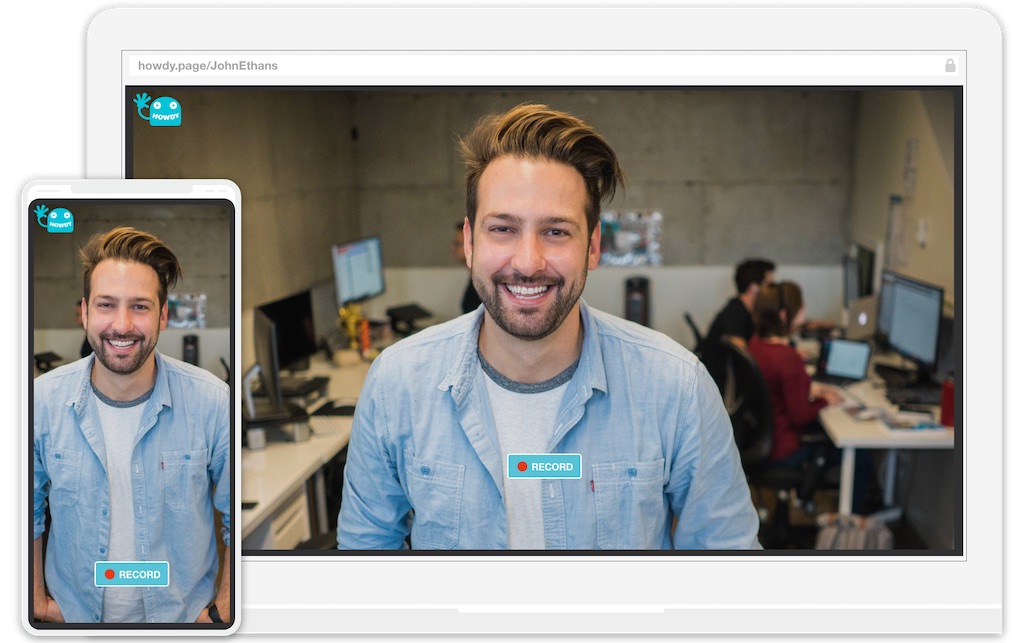Mike, my co-founder at markd.ltd, and I are both the kind of people that has many random ideas, and often find ourselves diving right in after we’ve come up with something new or novel or just quirky.
A few months ago we decided we should have a process to help us think about our ideas. Building new ideas is all fun and game, but at the end of the day, we’ve got a company to build, one which I hope can continue to be creative, fun, and useful.
So this is the criteria we came up with. This is not meant to be a general purpose criteria for filter ideas, but one that we decide to use because of our skills, experiences, personalities, and resource limitations.
I want this to be as transparent so I am copying it directly from our “Ideas Foundry” board so excuse the lack of polish to the language.
Criteria for projects and ideas
- ideas we are excited about. Gets us out of bed in the morning excited.
- Something the customer pays for directly. Business model should be simple. Not relying on donations.
- Start generating revenue from day one or from first non prototype/MVP version
- something we can at least relate to. Know who it is for. Who do we want to help?
- project is viral in nature, can grow organically
To address on each idea:
- Who does this help?
- How do we make money?
- How will it grow organically?
Let me walk you through this.
Ideas we are excited about
This is all about the sustainability of our energy to focus on one project.
Some ideas are potentially very profitable, but it might not be an area we want to spend our time on (ex. gambling).
Some are interesting but we know we woulds lose interest after the initial rush of excitement. These are ideas where it’s more exciting to come up with new solutions than actually implementing the solutions. (ex. new ways to transfer money between different currencies via blockchain). These are also ideas where we are intrigued by the technology more than the practicality.
Simple business models
We want to focus our attention away from figuring out how to extract the most value out of our products.
I am not against making the most profit our of an idea. However with our limited resource, we have to choose our battles and we’ve decided that by keeping business models simple, we can better judge the value of our products and focus on building the right products based on these values, rather than spending time creating complex deals involving many third parties.
When people pay us directly, we know they consider our ideas of value.
Early revenue
This is connected to the simple business model criteria. The sooner we can find out how many people find value in it (by paying for it), the sooner we know if the product is useful or entertaining to people. Without this, the qualitative (and even quantitative) feedback on the ideas/products can often be misleading.

Relatability
For some of our earlier products, we relied heavily on interviews with users in a sector that we are hugely unfamiliar with. It wasn’t intentional, we simply found that there’s a bigger demand from this group of people than what we had originally envisioned.
However the difficulty is that 2-hand information can be hard to fully incorporate into the product. We were often second-guessing what they wanted. Worst yet, we built what they said they wanted, and realised these new features and updates did not move the needle (they didn’t use the features despite asking for them repeatedly).
So we decided we should at least have some basic domain knowledge in the ideas we are exploring. I know this isn’t what the lean methodology might suggest, but it’s something we have to do given our limited resources to work in areas that we understand so that we don’t have to spend a lot of time back and forth trying to figure out the demand and the market.
Virality
Without a marketer on the team, marketing is always top of mind fo us.
We have experimented different marketing activities, ranging from engineering as marketing, social marketing, online ads, to content marketing (on and off our own sites).
Some of them worked better than others, but we’ve decided that for a product to really have significant growth potential, we need a way for it to grow organically, be it an invite system to get your team/friends/family to join, or social features where people would spread the words about the product naturally.
Questions for ourselves
To assist us in satisfying these criteria, we came up with 3 questions that we need to ask ourselves to with new ideas.
Who does this help? — gives us an indication of how well we know about the market.
How do we make money? — gives us a quick overview of the business model
How will it grow organically? — answers the question about the potential growth of the product.
First Idea that Satisfied the Criteria
The first idea that passed the criteria is Howdy.page — a service for people to receive video messages with customisable URLs.
Who does this help? — people overwhelmed with emails, particularly automated emails, people who are looking for an alternative way to be contacted, one that’s more engaging and more human. I am terrible at managing my emails, and one of the reasons is that a large portion of my emails are either 1. automated, pre-written, or 2. not personal enough to read. I crave the off-line, face-to-face communication, and I think this helps bring some of that magic back to the digital world.
How do we make money? — we charge people a monthly fee for the service. No ads, no selling any information.
How will it grow organically? — the way the product works is that users create pages that they can use to receive video messages, so naturally these pages are shared and shown to their audience and network. We hope this helps brining in a bit of visibility to the service, and after people record a video, we’d take the opportunity to ask if they might be interested in joining.
After the criteria
After the idea passed the criteria, we ran it through some more demand testing which I will write about in the future. Suffice to say that we feel confident enough about the idea that we went ahead and started planning and developing it from about two months ago.
Will this work? We will find out in a few months. (If you are interested in using Howdy before it’s public, you can sign up at howdy.page) However, regardless of the outcome of Howdy, I believe the criteria is a good first pass to help us think through ideas, particularly ideas that can fit this particular team at Markd.


Comments